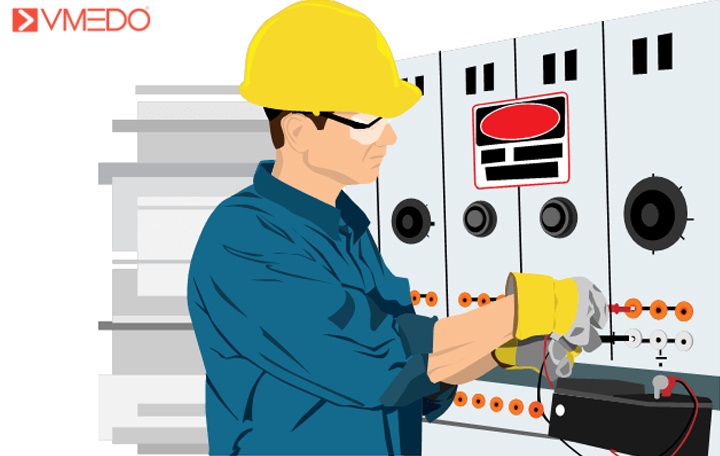Electrocution can happen at any workplace, however, well-prepared you are. Some incidents may be as small as a minor electric shock, and some so big that they can lead to cardiac arrest and death. If you want to avoid such incidents, implement these 10 simple steps to prevent electric shocks in the workplace.
How do Electrical Shocks Occur?
Electric shock is a sudden and unexpected exposure of the body to an electric current. Electric shock occurs when electricity flows through the body, typically from an external source like an electrical appliance or a power line. The severity of the electric shock depends on various factors, including the amount of current flowing through the body, the length of time the current is applied, the voltage, the path the current takes through the body, and the resistance of the body to the electric current.
Here are 10 simple steps that can be implemented to prevent electric shocks in the workplace:
- Identify and label all electrical hazards: Before anything else, it is important to identify and label all electrical hazards present in the workplace. This will ensure that everyone is aware of the potential risks and can take necessary precautions to avoid them.
- Inspect electrical equipment regularly: Regular inspections of all electrical equipment can help identify any potential hazards or defects that may cause electric shocks.
- Use ground fault circuit interrupters (GFCIs): GFCIs are designed to protect people from electric shock and are particularly useful in wet areas or places where there is a lot of electrical activity.
- Keep electrical equipment dry: Water and electricity do not mix, so it is important to keep all electrical equipment dry to avoid any potential electric shocks.
- Use appropriate electrical protective equipment: When working with electricity, it is important to use appropriate protective equipment such as gloves, boots, and safety glasses.
- Follow proper procedures: Procedures should be followed when working on or near electrical equipment to prevent any potential electrical hazards.
- Ensure proper wiring and grounding: Proper wiring and grounding are essential to prevent electric shocks. Ensure that all wiring is done correctly and that all electrical equipment is properly grounded.
- Use caution when working with electricity: It is important to use caution when working with electricity, including turning off the power before working on electrical equipment, avoiding touching electrical wires or circuits, and using only insulated tools.
- Train employees on electrical safety: All employees should be trained on electrical safety measures and procedures to ensure that they are aware of the potential risks and how to avoid them.
- Regularly review and update electrical safety policies: Regularly reviewing and updating electrical safety policies can help ensure that all safety measures are up to date and that employees are aware of any changes.
By following these steps, employers can help ensure that employees are protected from electrical hazards and reduce the risk of electric shocks in the workplace.
Some common symptoms of an electric shock include muscle contractions, burns, numbness or tingling, confusion, and difficulty breathing. If someone experiences an electric shock, it is important to seek medical attention immediately, especially if the shock was severe or lasted more than a few seconds.
If someone experiences an electric shock in the workplace, it is important to take immediate action to ensure their safety and well-being.
Here are some steps to follow:
- Call for emergency medical help if the shock appears to be serious.
- If the person is still in contact with the electrical source, do not touch them directly. Instead, turn off the power source or use a non-conductive object to remove them from the electrical source.
- If the person is unconscious, check their airway, breathing, and pulse. Begin CPR if necessary.
- If the person is conscious, ask them to lie down and elevate their legs. Keep them warm.
- Keep the person under close observation until medical help arrives.
- If the shock was caused by a workplace hazard, report it to your supervisor or safety officer as soon as possible to prevent similar incidents from happening in the future.
Employees should be trained on proper electrical safety procedures and be provided with appropriate personal protective equipment. Contact VMEDO for electric safety training and medical equipment.
